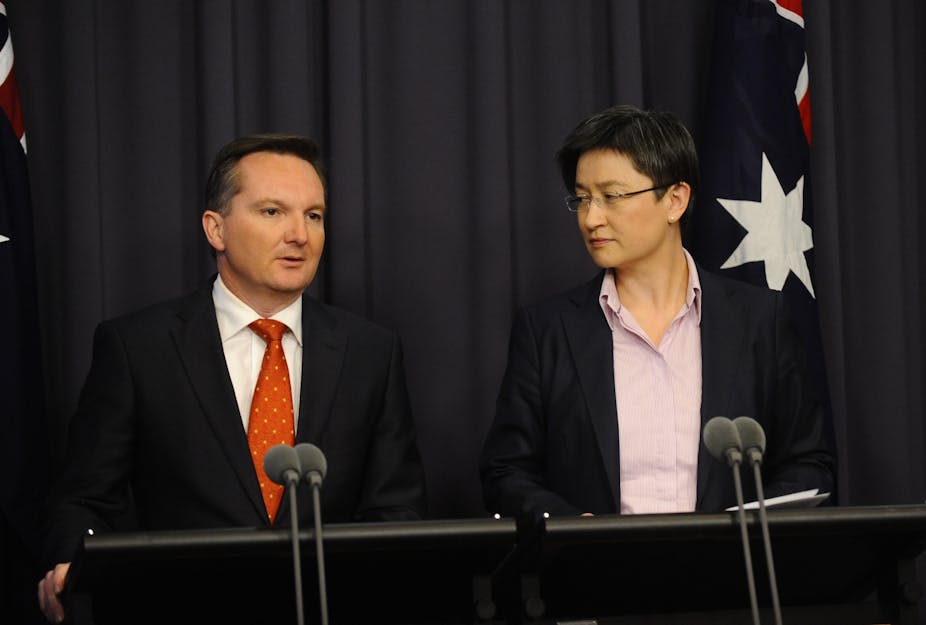The deficit will blow out to $30 billion this financial year and Australia will remain in the red for 12 months longer than the budget promised, after a $33 billion write-down in revenue.
Growth has been revised downwards and Australia’s unemployment rate is set to hit 6.25%, according to the government’s economic statement, which sets out $17.4 billion new savings over four years.
The statement, which says Australia’s economy is in transition with the end of the mining boom and warns of risks from abroad, sets the scene for the election, which Kevin Rudd is expected to announce on Sunday for September 7.
Labor has stuck to its budget time commitment to surplus in 2016-17, although the surplus is now projected to be only $4 billion, compared with $6.6 billion at budget time. But the return to budget “balance” in 2015-16 - reaffirmed by Treasurer Bowen’s office a week ago - has been abandoned, with a $4.7 billion deficit now expected that year.
This financial year’s $30.1 billion deficit compares with the budget figure of only $18 billion, while the revised deficit for 2014-15 is $24 billion - more than double the $10.9 billion estimated in May.
“While prospects remain favourable, the economic outlook has softened further since the budget, particularly for nominal GDP,” the statement says. “The outlook for world growth has weakened, including in China, and the world price of key commodities has fallen leading to lower forecast terms of trade.”
Real GDP has been revised from the budget’s 2.75% for 2013-14 to 2.25%, while nominal GDP comes down from 5% to 3.75%.
The jobless rate is now expected to be 6.25% for both 2013-14 and 2014-15, compared with the budget rates of 5.75% for each of the two years.
The rise in unemployment is especially difficult for the government going into the election campaign, as one of its key promises is to protect jobs.
The government said that because of the economic transition it has pushed its savings, which total $8.1 billion in net terms, into the third and fourth year of the forward estimates.
The public service is being hit with a higher efficiency dividend for 2014-15 to 2016-17, yielding $1.8 billion, while the foreign aid budget is once again being called on for savings, which will produce nearly $900 million in savings.
The earlier announced crackdown on a fringe benefit tax arrangements for cars will save $1.8 billion, increases in tobacco tax nearly $5.3 billion, and a new bank levy $733 million, and chasing up inactive superannuation accounts will save $582 million.
On the spending side, the deal to send all new boat arrivals to Papua New Guinea will cost a gross $1.1 billion, but a reduction in onshore asylum seeker costs means the net cost is about $600 million. As well, Australia is providing an extra $420 million in new aid to PNG to go towards specific health, education, justice and transport projects. The money will come from the aid budget, but not from existing PNG programs.
Bowen said the government was laying out its plans, its costings, its bottom line. “That’s the right thing to do, the alternative government should be doing exactly the same thing - not running away from the charter of budget honesty.”
Finance Minister Penny Wong said the savings had been difficult but they were responsible. She said the advice was that the savings in the public service could be made through a combination of cost measures, natural attrition and voluntary redundancies. The government had made it clear it expected agencies not to resort to forced redundancies.
Wong said the government had chosen not to take savings from health or education, “we’ve chosen not to cut the services that Australian families rely on,” she said. “That is the Liberal approach”.
Shadow Treasurer Joe Hockey said he didn’t believe the budget numbers and the situation would deteriorate if Labor was reelected.
“Labor has no strategy. The Coalition has a strategy - we are focused on strong economic growth, we are focused on job creation. We are focused on less government spending. Certainly we are focused on fewer taxes,” Hockey said.


